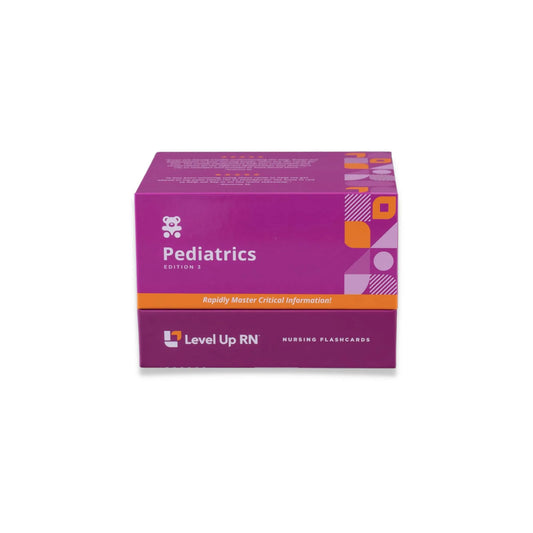Hi, I'm Cathy with Level Up RN. In this video, I will be discussing short bowel syndrome. And at the end of the video, I'm going to give you guys a little quiz to test your knowledge of some of the key points I'll be covering. So definitely stay tuned for that. And if you have our Level Up RN pediatric nursing flashcards, go ahead and pull out your flashcard on short bowel syndrome so you can follow along with me.
Short bowel syndrome is where we have a decrease in the length of the small intestine. This is typically the result of a surgery that required resection of the intestine, which means removal of part of the intestine due to an underlying disorder such as necrotizing enterocolitis or Crohn's disease, for example. So when we have a decrease in the length of the small intestine, we have decreased surface area available for the absorption of nutrients. So malabsorption is the key issue with this disorder. Signs and symptoms of short bowel syndrome include malnutrition, weight loss, diarrhea, steatorrhea, which means the patient has fatty, loose malodorous stool, as well as dehydration. and then labs may show acid-base imbalances as well as electrolyte imbalances such as hyponatremia, hypokalemia, and hypomagnesemia. And then vitamin and mineral deficiencies are also common due to malabsorption.
Diagnosis of short bowel syndrome includes obtaining the patient's medical history, which likely includes a bowel resection for an underlying disorder. The provider may also order blood tests and stool tests as well as diagnostic procedures such as an X-ray, CT, and/or endoscopy. So treatment of short bowel syndrome is really focused on nutritional support, and many patients will require parenteral nutrition. This is where they receive nutrition through an IV. However, nutritional support can also include enteral nutrition, oral rehydration solutions, as well as diet modifications.
All right. It's time for a quiz, and I've got three questions for you.
Question number 1, why does malabsorption occur with short bowel syndrome?
The answer is there is decreased surface area available for the absorption of nutrients.
Question number 2, what do you call loose malodor stool with a high-fat content?
The answer is steatorrhea.
Question number 3, many individuals with short bowel syndrome will require total parenteral nutrition, true or false?
The answer is true.
All right. That is it for this video. I hope you found it to be helpful. Take care and good luck with studying.
[BLOOPERS]
Diagnosis of short bowel syndrome includes [inaudible].


